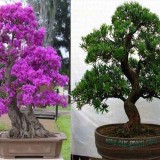Ginkgo
Ginkgo
Ginkgo, a genus of bizarre non-flowering plants has one surviving species, G. biloba, which is regarded as a living fossil. Ginkgo evolved in an era before flowering plants, when ferns, cycads, and cycadeoids dominated disturbed streamside environments, forming a low, open, shrubby canopy. The most recently described new species (fossil) is Ginkgo huolinhensis. a seed fern, cultivated for its pollution, disease and insect tolerance even in urban conditions. Its seeds can be eaten and its extract is believed to improve brain, memory and nerve function. Ginkgo is often used for memory disorders including Alzheimer’s disease. It is also used for conditions that seem to be due to reduced blood flow in the brain, especially in older people. These conditions include memory loss, headache, ringing in the ears, vertigo, difficulty concentrating, mood disturbances, and hearing disorders. Some people use it for other problems related to poor blood flow in the body, including leg pain when walking (claudication), and Raynaud’s syndrome (a painful response to cold, especially in the fingers and toes).











